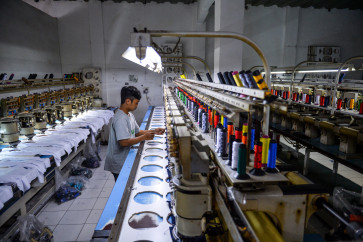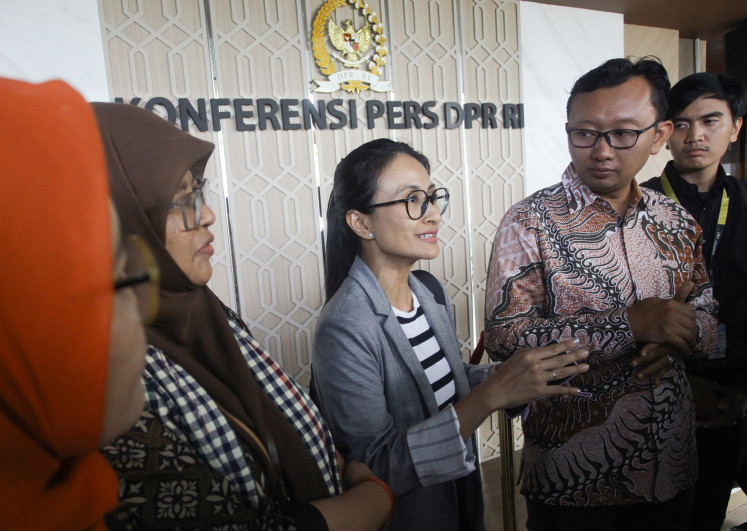Popular Reads
Top Results
Can't find what you're looking for?
View all search resultsPopular Reads
Top Results
Can't find what you're looking for?
View all search resultsGovt to feed students at schools to fight stunting
The government plans to start providing meals at certain state and private elementary schools around the archipelago to fight malnutrition and stunted growth
Change text size
Gift Premium Articles
to Anyone
T
he government plans to start providing meals at certain state and private elementary schools around the archipelago to fight malnutrition and stunted growth.
'We plan to provide free balanced meals starting this 2015 school year to supplement Indonesian children's nutrition. The practice will be different for each school, depending on its readiness. The program will be funded by the government and the schools,' the Health Ministry's nutrition development director, Doddy Iswardy, said recently.
He added that the program would complement the government's efforts to prevent and detect stunted growth in children.
'Pregnant women and babies can get free biscuits at every community health center. We also measure babies to detect stunted growth,' he said.
Pediatrician Damayanti R Sjarif from the department of children's health at the University of Indonesia's Medical School and Cipto Mangunkusumo Hospital (RSCM) explained the nutritional standards for preventing and treating stunted growth.
'Children need food with high protein, iron, zinc and calcium to reach a normal height. Animal protein, such as meat, egg, fish and milk, has more complete essential amino acids, which contribute to vertical growth, than vegetable protein,' Dayamanti told reporters at a talk show.
Infants should start consuming foods other than breast milk at the age of six months, she added, to ensure they got all the calories they needed.
'Babies of six to 12 months old need 1.2 grams of protein per kilogram of body weight, while those who are one to three years old need 1.05 grams,' she explained.
Stunted growth occurs as a result of proper nutrition during the first 1,000 days of infants' development, including during gestation. During those 1,000 days, infants' brains grow 95 percent and the trunk of their bodies grows faster than during anytime afterwards.
The best way to prevent stunted growth is to ensure the proper nutrition of the mother during pregnancy and of the child after birth.
If stunted growth has already occurred in an infant, the best way to treat it is to introduce animal protein into the child's diet as soon as possible.
'We can fix stunting the best during puberty because that is when another growth spurt occurs,' she said.
'In the short-term, stunted growth reduces children's growth, immunity, cognitive thinking and fat-burning. In the long-term, children can suffer from obesity because they can't burn fat properly. This brings about other ailments, such as diabetes, coronary heart disease, hypertension and osteoporosis,' she said.
On a national scale, she went on, stunted children would lose four to 10 percent of their lifetime's productivity.
'They will be limited to menial work because their intelligence is hindered. Worse, if they also don't have enough iron, they will not have the strength for hard labor and might be reducted to begging,' she said.
She added that immediate action was required because of the high incidence of stunting nationwide.
'One-third of children in Indonesia suffer stunted growth. According to World Health Organization [WHO] data in 2013, 37.2 percent of minors in Indonesia suffer from it,' she said.
According to UNICEF data in 2013, Indonesia had the fifth-highest number of stunted children in the world.
Doddy added that the eastern part of Indonesia, including Papua, Maluku and NTT, had the highest rates of stunted growth. The region has an abundance of seafood, which could address the problem, but most is exported to other regions or abroad. (rbk)










